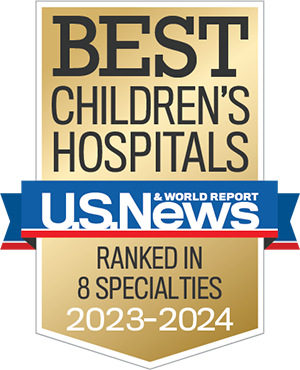The new home of the Research Institute at CHOC, part of Rady Children’s Health, isn’t just about bricks and walls and machines and science.
It’s about children – those in need of cutting-edge treatment now and in the future.
That was the message Research Institute leaders, as well as a guest speaker, repeatedly made at a recent open house for the new space, which takes up the entire ninth floor of the new Southwest Tower.
“Families like us need not just comfort but breakthroughs,” said Katie Mosier, who shared with guests the story of her son, Sebastian Guerra, who was diagnosed with diffuse midline glioma (DMG), a rare and aggressive brain tumor, on his 10th birthday and died a little more than a year later on Feb. 6, 2025.

Throughout his treatment, Sebastian endeared himself to his large care team at Rady Children’s, said Katie, standing beside Sebastian’s father, Miguel Guerra.
Research, Katie said, gave Sebastian the gift of time. He was involved in a clinical trial and donated all six of his tumors to the Monje Lab at Stanford University as well as the Children Brain Tumor Network, which makes them accessible for scientists and researchers involved in clinical trials for DMG.
“This floor is love in action and pain transformed into purpose and a promise to fight harder, search deeper, and never give up,” Katie said.
Phuong Dao, executive director of the Research Institute, called Sebastian “a beloved member of the Research Institute family. His infectious spirit and bold and bright presence continue to inspire us to go beyond.”

A first in Orange
The opening of the Research Institute marks the first time in the history of the pediatric health care system’s Orange campus where research has dedicated space for seeing participants for study-specific outpatient procedures.
Established in 2003, the Research Institute has experienced dramatic growth under the leadership of Chief Scientific Officer Dr. Terence Sanger, whose tenure began in early 2020.
With a patient-centered, bedside-to-bedside approach to research, the institute now has more than 650 studies underway across most subspeciality disciplines and a staff of nearly 150 full-time employees.
At 29,000 square feet, the new space in the Southwest Tower triples research’s footprint in Orange and adds important new abilities.

The ninth floor of the SWT has two key service areas:
- Basic and translational laboratories, which take up two-thirds of the floor. This area has 46 lab benches for scientists to seek new or improved drugs, devices, or diagnostics. Key features of the lab space include the centrifuge core, flow cytometry core, histology core, and microscopy core. There also are clean rooms for the development of cell and gene therapies and a Maker Space where high-tech 3D printing will enhance researchers’ abilities to create and innovate.
- The Center for Clinical Research allows study participants to be seen in space designed to support study-specific visits. There are four exam rooms, four consultation rooms, and one observation room supporting diverse clinical protocols. There is also a Human Performance Laboratory for gait and motion analysis and exercise physiology, as well as an Exploratorium to stimulate interest in STEAM (science, technology, engineering, art, math) activities. The Center for Clinical Research also features three large circular windows through which patients and families can look into the basic and translational laboratory room. Future displays will include hands-on activities and STEAM Explorers, a monthly production collaboration produced by the Research Institute and Seacrest Studios.

At the center of clinical care
Dr. Sanger credited the entire team at the Research Institute for bringing its new home to fruition.
“Their expertise has been amazing, and you see it in every detail of this space,” he said.
The Research Institute’s location, directly above 25 specialty clinics in the outpatient building and across the street from the hospital, “represents a huge step for Rady Children’s and the children that we serve,” Dr. Sanger said, adding:
“Research is part of clinical care. It’s not something separate. It’s not in the building across the street full of researchers who are doing things we don’t know. It is research that directly affects clinical care
“We need to be always moving forward,” he continued. “Our motto is ‘Go Beyond.’ We need to go beyond what we know. We will never understand enough, but we can always understand more and always make it better and we have to do this for our patients.”

Learn about pediatric research and clinical trials at CHOC




